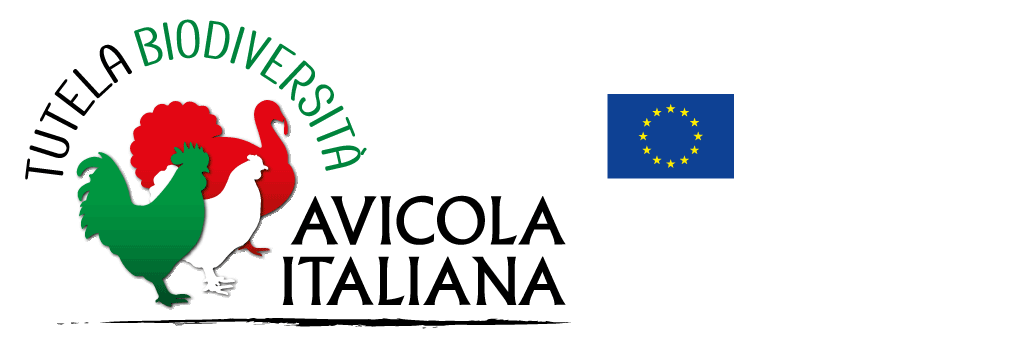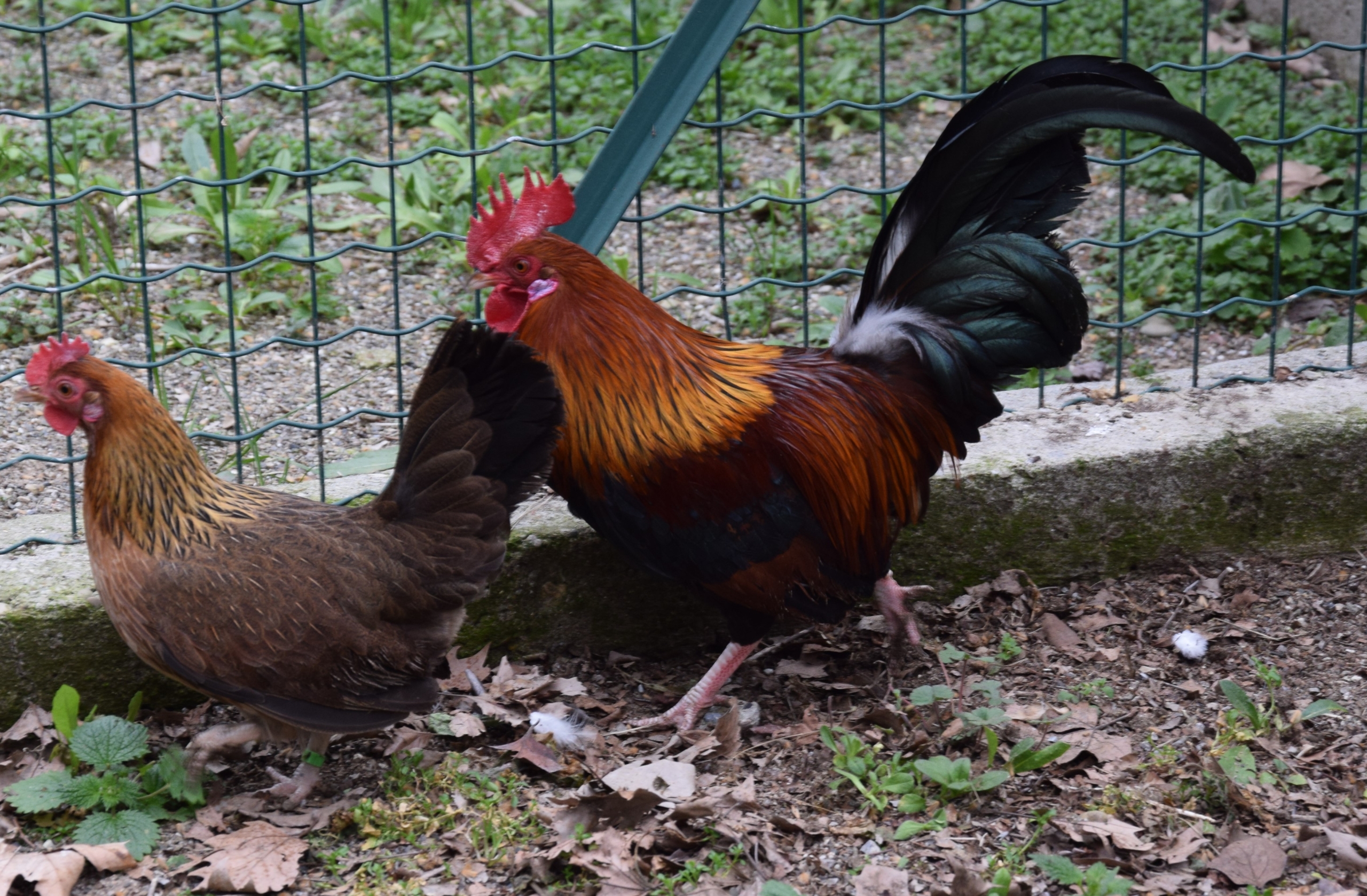Mugellese
Synonyms or local names: Mugellina
Geographic origin: Mugello, mountain area in the province of Firenze
Geographic distribution: Tuscany, northern Lazio
Estimated total population size: 277 (Castillo et al., 2021)
Extinction risk status (FAO, 1998): Threatened conserved
Any other specific information: Mesomorphic, dwarf-sized breed
Historical origin of the breed
The first references to dwarf-sized chickens date back to the Latin writer Columella who reports that they were known by the Romans even before Julius Caesar, however, they were little appreciated because they produced less meat due to their size. Subsequently, in texts from the 15th and 16th centuries, belonging to the Medici family, reference is made to a “little Javan hen” imported precisely from the island of Java for its beauty. The roosters were exposed to decorate the aviaries of parks and lemon groves while the females were used for brooding the eggs of other poultry such as pheasants and peacocks thanks to their outstanding maternal qualities. Given the characteristics described in the Medici annals and considering that the Medici family was originally from Mugello, one can easily think that these subjects gave rise to the Mugellese breed. Then, testimonies dating back to 1872 mentioned that the prince of Demidoff, Paul II, by purchasing the Medici-Lorraine villa of Pratolino in Mugello, had come into possession with the large aviaries also of the subjects bred there, including the famous “small Javan hens”. From this nucleus, the small hens then spread throughout the Mugello area, populating the sharecropping peasant farmyards and contributing to their economy as natural “incubators” for the eggs of various poultry. As reported by the oral traditions of the Mugello inhabitants, the “little Javan hen”, which has now become an actual Mugello breed (Mugellese means “from Mugello”), was part of all peasant farmyards, appreciated for its aptitude for brooding and taking care of the chicks and good production of eggs (even if small). However, in more modern times, as it is no longer considered a livestock breed, also supplanted by mechanical incubators for domestic use, it has seriously risked extinction.
Qualitative morphological traits
Feather morphology: Normal
Feather distribution: Normal
Plumage structure: Abundant and close fitting to the body, quite soft
Plumage colours: Most common colours: Golden wild type (Selvatico oro), Wheaten gold (Dorata frumento)
Colour features: Bicolour, with sexual dimorphism, with eye-catching colours in males and mimetic females (especially in the Golden wild type, which reminds of the plumage of the wild Gallus gallus bankiva to a greater extent). No eclipse plumage is evident.
Colour pattern:
Golden wild type (Selvatico oro): Male: intense golden yellow head, golden yellow cape slightly lighter in the terminal part, with black flames with green sheen; back, shoulders and wing coverts bright dark red; golden yellow lanceolate feathers on the rump with black flames and green sheen; large wing coverts black, with metallic blue-green sheen; primary flight feathers black with narrow brown outer border; secondary flight feathers with black inner web and tip, brown outer web forming the wing bay; chest black with green sheen without traces of brown; black belly and legs; black tail with strong green sheen; grayish down. Female: golden yellow head; golden yellow cape with black flames with green sheen; remainder of plumage brown with fine black peppering regularly distributed, shaft slightly paler permitted; primary flight feathers black with narrow peppery brown outer edge, secondary feathers black inner web and peppery brown outer web, the two large upper coverts marked like the rest of the plumage; salmon chest, grey/brown belly and legs; black tail with green sheen and large sickles, sometimes with brown edging.
Wheaten gold (Dorata frumento): Male: golden orange head; golden orange cape which becomes lighter in the terminal part (absent flames), back and shoulders and coverts of the wings bright brown; lanceolate feathers golden orange in the rump, absence of flames, large black coverts with green sheen, primary flight feathers, chest, belly and legs black; secondary flight feathers with black inner web and brown outer web to form a brown wing bay; black tail with green sheen and large sickles, with brown edging permitted. Gray down. Female: light golden head, golden brown cape, small opaque black flames permitted; plumage generally wheaten including primaries, secondaries with black inner web and outer wheaten web; light wheaten chest, belly and legs, tail with dull black rectrices and buff sheen, wheaten tail coverts.
Chick plumage colour:
Golden wild type: ancestral type with brown mimetic streaks going from head to tail similar to those present in chicks of the wild type Gallus gallus bankiva
Wheaten gold: uniform and very light straw yellow, tending towards white. In males, over time and with the appearance of the adult plumage, the color becomes quite similar to the wild type plumage.
Comb type: Simple comb, upright, firmly set, not too fine in texture, following the line of the neck without touching it. In the female, not too deep serrations, sometimes falling to one side of the head.
Comb spikes: Four to six spikes
Ear-lobe colour: Red, sometimes with a slight presence of white; fine texture, without folds
Beak colour: Horn
Iris colour: Orange to red
Skin colour: Flesh-coloured
Shank colour: Flesh-coloured
Shank feathering: Free from feathers
Other specific and distinct visible traits: Dwarf-sized chicken with homeosome traits, well set and solid, so much that it appears slightly squat. Proud attitude.
Quantitative morphological traits
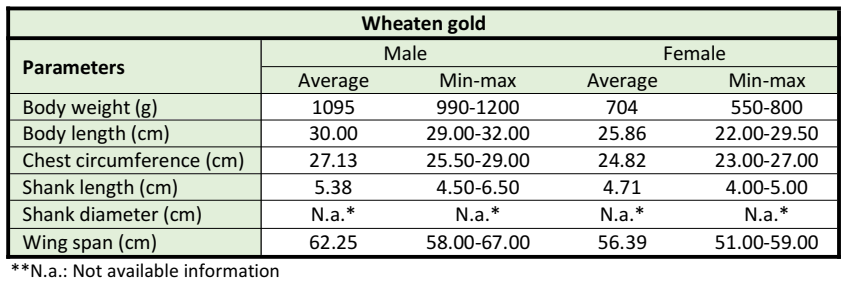
Genetic traits
Characterisation of the breed with Single Nucleotide Polymorphisms (SNPs)
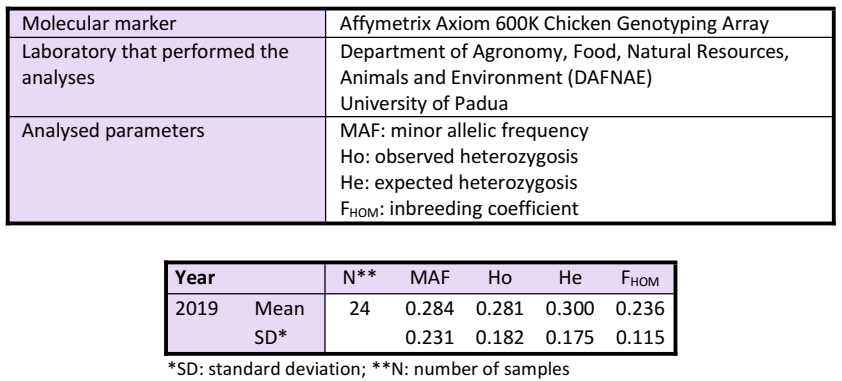
Reproductive and productive quantitative traits
Egg-quality traits
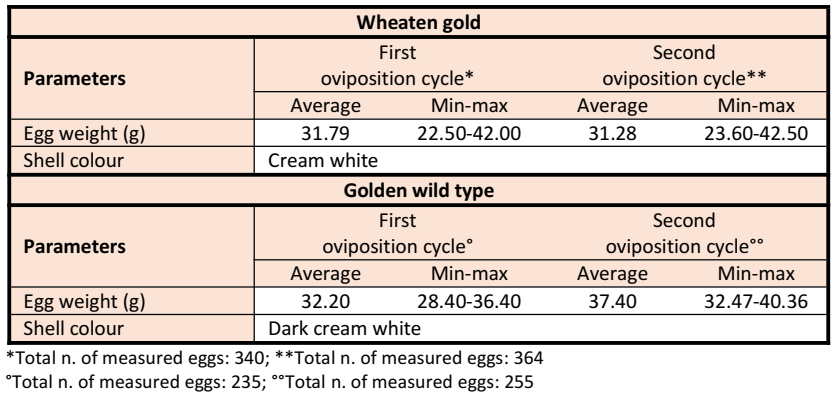

Oviposition, brooding and incubation data
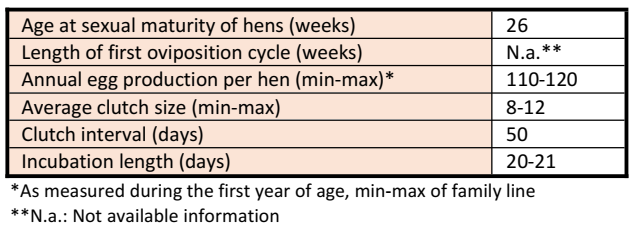
Reproductive traits

Body weight and growth data
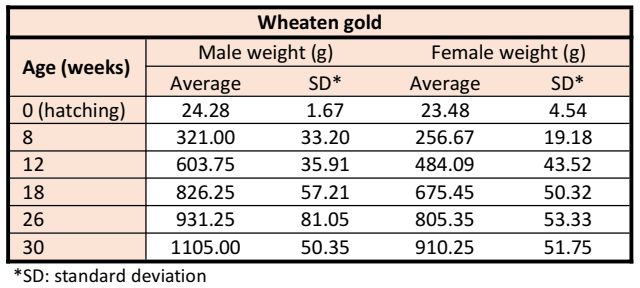
Mortality

Rearing traits
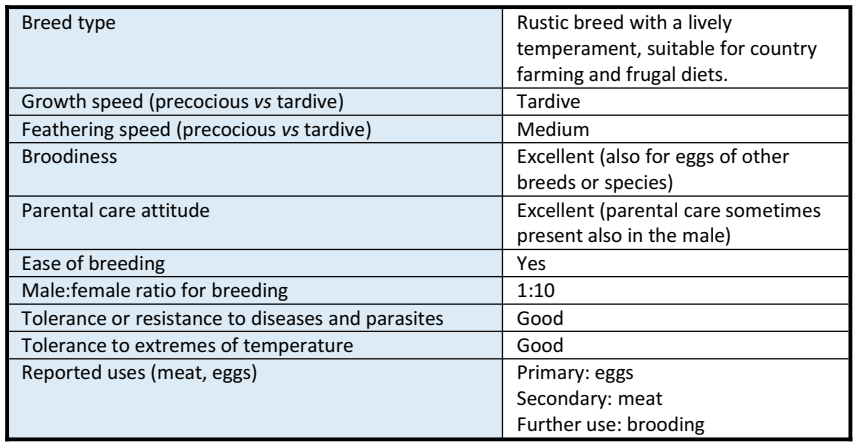
The presented data were registered in the nucleus populations of Wheaten gold and Golden wild-type Mugellese conserved at the University of Florence (UniFI).
The data are presented by breed and, for some traits, by colour.
Latest update: February 13th, 2024
Germplasm collection
The breed is conserved in our Cryobank with 9 semen doses from 6 donors.
